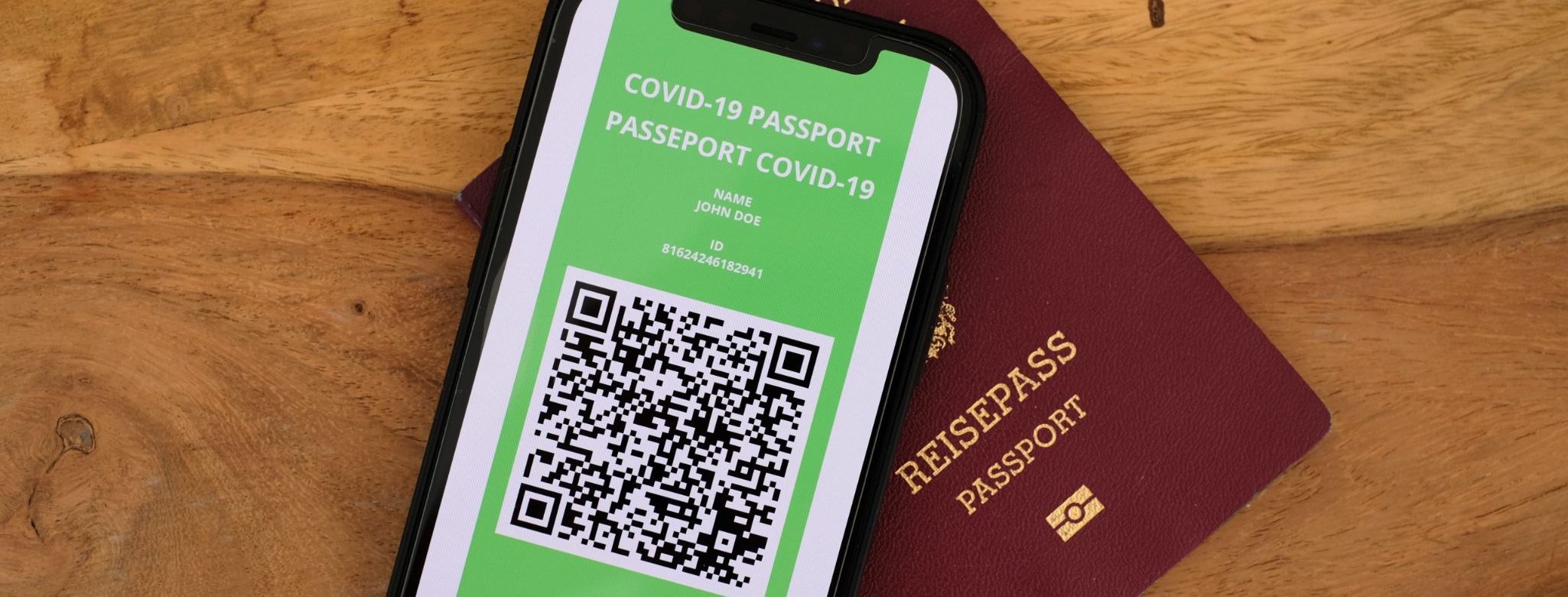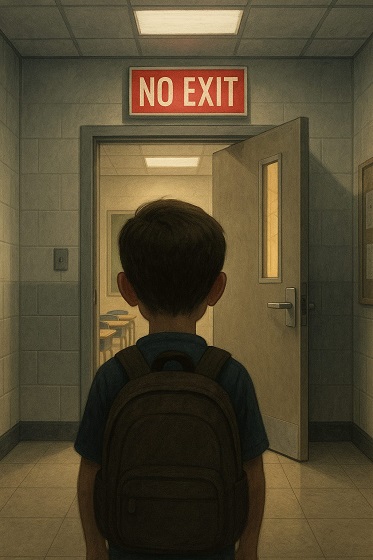Brownstone Institute
The Demonization of the Unvaccinated: A Look Back

Article from the Brownstone Institute
BY
Social media has been in an uproar since a member of European Parliament posted a video of a hearing in which a Pfizer director admitted the company never tested whether its Covid mRNA vaccine prevents transmission prior to its approval for emergency use.
Though the fact that Covid mRNA vaccines do not prevent transmission was, of course, abundantly clear from the data soon after their implementation, this myth was a primary justification for vaccine passes and a primary cause of the unprecedented venom launched at those who refused Covid vaccines throughout 2021 and continuing through today.
Not only did governments exert this pressure through policy, but in many cases politicians and officials used their office to deliberately stoke the social stigmatization of the unvaccinated. Here’s a look back at some of the unprecedented vitriol that was launched at those who refused Covid vaccines from 2021 and beyond.
Officials in many jurisdictions proposed making the unvaccinated pay more for healthcare.


In Victoria, Australia—where lockdowns were longer than in perhaps any other city in the world—one politician proposed cutting the unvaccinated out of the national health system entirely.

A particularly disturbing idea that began to gain serious traction among the elite commentariat was to have hospitals triage emergency care to serve the unvaccinated last, or even deny healthcare to the unvaccinated entirely—a fairly clear-cut crime against humanity.



One vocal proponent of the idea of triaging emergency care to disfavor the unvaccinated was David Frum, Senior Editor of the Atlantic, most famous for his outspoken support for the invasion of Iraq. When his infamous tweet on the subject sparked an uproar, Frum doubled down.

Piers Morgan agreed that the unvaccinated should be denied emergency care.

Shockingly, this appalling idea of triaging emergency care based on vaccination status is still being proposed to this day.

The demonization of the unvaccinated was, of course, far from limited to healthcare. Vilifying the unvaccinated became a kind of illiberal fad among the elite commentariat. The US CDC even paid screen writers and comedians to promote Covid vaccines, which in some cases involved paying them to mock the unvaccinated.

In a bout of recidivism to the early 20th century, Austria and Germany introduced the chilling concept of “lockdown for the unvaccinated.”

“Lockdown for the unvaccinated” gained traction in the English-speaking world as well.

Most countries, cities, and states across the western world introduced vaccine passes that their own citizens had to show in order to partake in daily life. The World Health Organization published an extensive document on implementing a digital vaccine-pass system, including an international vaccine status registry and instructions on how to later revoke someone’s vaccine pass.

The most dystopian of these vaccine pass systems was in Lithuania, where the unvaccinated were banned from nearly all public spaces and employment outside their homes; the few shops where they could purchase essentials had to post large red signs on their doors indicating that unvaccinated persons could be present.
And of course, who could forget Justin Trudeau’s classic fuhrer-style rant about having to share public transportation with the unvaccinated, despite government documents later revealing that he had no science to back any of these claims.
Like so much of the response to Covid, these vaccine passes and the illiberal fad of stigmatizing the unvaccinated were unscientific, unprecedented, ineffective, totalitarian, brutal, and dumb.
It was never remotely realistic for any government to expect every single person to get vaccinated, especially when the vaccine in question involved a novel genetic-based therapy. Thus, these proposals to impose draconian hardships on those who refused Covid vaccines would inevitably involve the state imposing draconian hardships on a sizable portion of the population.
According to Harvard epidemiologist Martin Kulldorff, one of the most credible voices on the subject, Covid vaccines likely yielded benefits for the elderly and vulnerable, but it remains entirely unclear whether Covid vaccines have yielded any benefit at all for healthy adults and especially for children. Coupled with the still-unknown risks associated with mRNA technology and the now well-documented cases of death and serious injury from these vaccines, for governments across the world to have exerted extreme pressure on children and healthy adults to get these vaccines is absolutely sickening.
That some healthy young people were surely coerced into receiving an injection that led to their death or serious injury, when the data showed that the benefits did not outweigh the risks, is an unconscionable tragedy.
Republished from the author’s Substack
Brownstone Institute
Bizarre Decisions about Nicotine Pouches Lead to the Wrong Products on Shelves

From the Brownstone Institute
A walk through a dozen convenience stores in Montgomery County, Pennsylvania, says a lot about how US nicotine policy actually works. Only about one in eight nicotine-pouch products for sale is legal. The rest are unauthorized—but they’re not all the same. Some are brightly branded, with uncertain ingredients, not approved by any Western regulator, and clearly aimed at impulse buyers. Others—like Sweden’s NOAT—are the opposite: muted, well-made, adult-oriented, and already approved for sale in Europe.
Yet in the United States, NOAT has been told to stop selling. In September 2025, the Food and Drug Administration (FDA) issued the company a warning letter for offering nicotine pouches without marketing authorization. That might make sense if the products were dangerous, but they appear to be among the safest on the market: mild flavors, low nicotine levels, and recyclable paper packaging. In Europe, regulators consider them acceptable. In America, they’re banned. The decision looks, at best, strange—and possibly arbitrary.
What the Market Shows
My October 2025 audit was straightforward. I visited twelve stores and recorded every distinct pouch product visible for sale at the counter. If the item matched one of the twenty ZYN products that the FDA authorized in January, it was counted as legal. Everything else was counted as illegal.
Two of the stores told me they had recently received FDA letters and had already removed most illegal stock. The other ten stores were still dominated by unauthorized products—more than 93 percent of what was on display. Across all twelve locations, about 12 percent of products were legal ZYN, and about 88 percent were not.
The illegal share wasn’t uniform. Many of the unauthorized products were clearly high-nicotine imports with flashy names like Loop, Velo, and Zimo. These products may be fine, but some are probably high in contaminants, and a few often with very high nicotine levels. Others were subdued, plainly meant for adult users. NOAT was a good example of that second group: simple packaging, oat-based filler, restrained flavoring, and branding that makes no effort to look “cool.” It’s the kind of product any regulator serious about harm reduction would welcome.
Enforcement Works
To the FDA’s credit, enforcement does make a difference. The two stores that received official letters quickly pulled their illegal stock. That mirrors the agency’s broader efforts this year: new import alerts to detain unauthorized tobacco products at the border (see also Import Alert 98-06), and hundreds of warning letters to retailers, importers, and distributors.
But effective enforcement can’t solve a supply problem. The list of legal nicotine-pouch products is still extremely short—only a narrow range of ZYN items. Adults who want more variety, or stores that want to meet that demand, inevitably turn to gray-market suppliers. The more limited the legal catalog, the more the illegal market thrives.
Why the NOAT Decision Appears Bizarre
The FDA’s own actions make the situation hard to explain. In January 2025, it authorized twenty ZYN products after finding that they contained far fewer harmful chemicals than cigarettes and could help adult smokers switch. That was progress. But nine months later, the FDA has approved nothing else—while sending a warning letter to NOAT, arguably the least youth-oriented pouch line in the world.
The outcome is bad for legal sellers and public health. ZYN is legal; a handful of clearly risky, high-nicotine imports continue to circulate; and a mild, adult-market brand that meets European safety and labeling rules is banned. Officially, NOAT’s problem is procedural—it lacks a marketing order. But in practical terms, the FDA is punishing the very design choices it claims to value: simplicity, low appeal to minors, and clean ingredients.
This approach also ignores the differences in actual risk. Studies consistently show that nicotine pouches have far fewer toxins than cigarettes and far less variability than many vapes. The biggest pouch concerns are uneven nicotine levels and occasional traces of tobacco-specific nitrosamines, depending on manufacturing quality. The serious contamination issues—heavy metals and inconsistent dosage—belong mostly to disposable vapes, particularly the flood of unregulated imports from China. Treating all “unauthorized” products as equally bad blurs those distinctions and undermines proportional enforcement.
A Better Balance: Enforce Upstream, Widen the Legal Path
My small Montgomery County survey suggests a simple formula for improvement.
First, keep enforcement targeted and focused on suppliers, not just clerks. Warning letters clearly change behavior at the store level, but the biggest impact will come from auditing distributors and importers, and stopping bad shipments before they reach retail shelves.
Second, make compliance easy. A single-page list of authorized nicotine-pouch products—currently the twenty approved ZYN items—should be posted in every store and attached to distributor invoices. Point-of-sale systems can block barcodes for anything not on the list, and retailers could affirm, once a year, that they stock only approved items.
Third, widen the legal lane. The FDA launched a pilot program in September 2025 to speed review of new pouch applications. That program should spell out exactly what evidence is needed—chemical data, toxicology, nicotine release rates, and behavioral studies—and make timely decisions. If products like NOAT meet those standards, they should be authorized quickly. Legal competition among adult-oriented brands will crowd out the sketchy imports far faster than enforcement alone.
The Bottom Line
Enforcement matters, and the data show it works—where it happens. But the legal market is too narrow to protect consumers or encourage innovation. The current regime leaves a few ZYN products as lonely legal islands in a sea of gray-market pouches that range from sensible to reckless.
The FDA’s treatment of NOAT stands out as a case study in inconsistency: a quiet, adult-focused brand approved in Europe yet effectively banned in the US, while flashier and riskier options continue to slip through. That’s not a public-health victory; it’s a missed opportunity.
If the goal is to help adult smokers move to lower-risk products while keeping youth use low, the path forward is clear: enforce smartly, make compliance easy, and give good products a fair shot. Right now, we’re doing the first part well—but failing at the second and third. It’s time to fix that.
Addictions
The War on Commonsense Nicotine Regulation

From the Brownstone Institute
Cigarettes kill nearly half a million Americans each year. Everyone knows it, including the Food and Drug Administration. Yet while the most lethal nicotine product remains on sale in every gas station, the FDA continues to block or delay far safer alternatives.
Nicotine pouches—small, smokeless packets tucked under the lip—deliver nicotine without burning tobacco. They eliminate the tar, carbon monoxide, and carcinogens that make cigarettes so deadly. The logic of harm reduction couldn’t be clearer: if smokers can get nicotine without smoke, millions of lives could be saved.
Sweden has already proven the point. Through widespread use of snus and nicotine pouches, the country has cut daily smoking to about 5 percent, the lowest rate in Europe. Lung-cancer deaths are less than half the continental average. This “Swedish Experience” shows that when adults are given safer options, they switch voluntarily—no prohibition required.
In the United States, however, the FDA’s tobacco division has turned this logic on its head. Since Congress gave it sweeping authority in 2009, the agency has demanded that every new product undergo a Premarket Tobacco Product Application, or PMTA, proving it is “appropriate for the protection of public health.” That sounds reasonable until you see how the process works.
Manufacturers must spend millions on speculative modeling about how their products might affect every segment of society—smokers, nonsmokers, youth, and future generations—before they can even reach the market. Unsurprisingly, almost all PMTAs have been denied or shelved. Reduced-risk products sit in limbo while Marlboros and Newports remain untouched.
Only this January did the agency relent slightly, authorizing 20 ZYN nicotine-pouch products made by Swedish Match, now owned by Philip Morris. The FDA admitted the obvious: “The data show that these specific products are appropriate for the protection of public health.” The toxic-chemical levels were far lower than in cigarettes, and adult smokers were more likely to switch than teens were to start.
The decision should have been a turning point. Instead, it exposed the double standard. Other pouch makers—especially smaller firms from Sweden and the US, such as NOAT—remain locked out of the legal market even when their products meet the same technical standards.
The FDA’s inaction has created a black market dominated by unregulated imports, many from China. According to my own research, roughly 85 percent of pouches now sold in convenience stores are technically illegal.
The agency claims that this heavy-handed approach protects kids. But youth pouch use in the US remains very low—about 1.5 percent of high-school students according to the latest National Youth Tobacco Survey—while nearly 30 million American adults still smoke. Denying safer products to millions of addicted adults because a tiny fraction of teens might experiment is the opposite of public-health logic.
There’s a better path. The FDA should base its decisions on science, not fear. If a product dramatically reduces exposure to harmful chemicals, meets strict packaging and marketing standards, and enforces Tobacco 21 age verification, it should be allowed on the market. Population-level effects can be monitored afterward through real-world data on switching and youth use. That’s how drug and vaccine regulation already works.
Sweden’s evidence shows the results of a pragmatic approach: a near-smoke-free society achieved through consumer choice, not coercion. The FDA’s own approval of ZYN proves that such products can meet its legal standard for protecting public health. The next step is consistency—apply the same rules to everyone.
Combustion, not nicotine, is the killer. Until the FDA acts on that simple truth, it will keep protecting the cigarette industry it was supposed to regulate.
-

 Business1 day ago
Business1 day agoCarney shrugs off debt problem with more borrowing
-

 Crime2 days ago
Crime2 days agoCBSA Bust Uncovers Mexican Cartel Network in Montreal High-Rise, Moving Hundreds Across Canada-U.S. Border
-

 armed forces2 days ago
armed forces2 days agoWhy we keep getting Remembrance Day wrong
-

 Alberta15 hours ago
Alberta15 hours agoHow economic corridors could shape a stronger Canadian future
-

 MAiD1 day ago
MAiD1 day agoQuebec has the highest euthanasia rate in the world at 7.4% of total deaths
-

 Alberta21 hours ago
Alberta21 hours agoWhen Teachers Say Your Child Has Nowhere Else to Go
-

 armed forces2 days ago
armed forces2 days agoWhat A Second World War Aircraft Taught Me About Remembrance Day
-

 Addictions20 hours ago
Addictions20 hours agoCanada is divided on the drug crisis—so are its doctors














